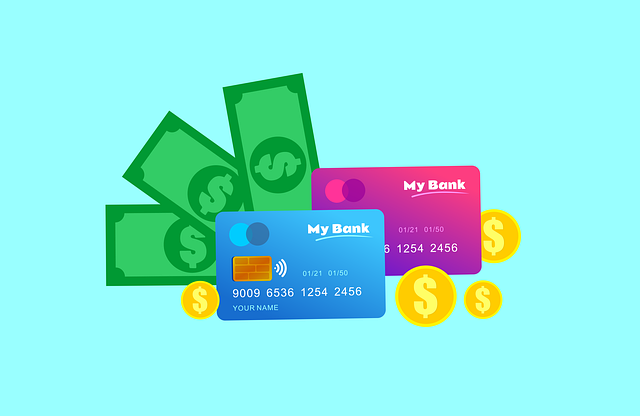Understanding private student loan interest rates is crucial for effective debt reduction plans. Refinancing offers a solution by locking in fixed rates, simplifying repayment, and saving money on interest charges. By consolidating multiple loans with lower rates, refinancing reduces monthly payments and provides long-term financial stability. This strategic move is accessible to borrowers with various credit backgrounds, allowing them to manage debt more effectively and free up funds for other essential goals.
“Are you burdened by private student loans? Consider refinancing as a powerful strategy to save money and simplify your financial journey. This article guides you through the process, addressing key aspects like understanding interest rates, their impact on debt reduction plans, and exploring various refinancing options. Learn how refinancing can lower monthly payments and yield significant long-term savings, while dispelling common misconceptions surrounding this valuable tool for managing private student loans.”
- Understanding Private Student Loan Interest Rates
- The Impact of Refinancing on Debt Reduction Plans
- Exploring Refinancing Options for Private Loans
- How Refinancing Can Lower Monthly Payments
- Long-Term Savings with Debt Reduction Strategies
- Common Misconceptions About Private Loan Refinancing
Understanding Private Student Loan Interest Rates

Understanding Private Student Loan Interest Rates is a crucial step in developing an effective debt reduction plan. These loans, unlike federal ones, typically come with variable interest rates that can fluctuate based on market conditions and the lender’s policies. This means your monthly payments can change over time, potentially increasing your overall cost of borrowing.
When considering refinancing options, borrowers have the chance to lock in a fixed interest rate, which provides stability and often results in significant savings. Fixed rates mean your payment amount remains consistent throughout the loan term, simplifying budgeting and making it easier to manage your debt effectively within a long-term financial strategy.
The Impact of Refinancing on Debt Reduction Plans

Refinancing private student loans can significantly impact your debt reduction plans. By consolidating your existing loans into a single, new loan with a lower interest rate, you can save on the overall cost of repayment. This is particularly beneficial for borrowers who have multiple loans from different lenders, as it streamlines the repayment process and often simplifies the terms.
A key advantage of refinancing is the potential to reduce monthly payments, allowing you to pay off your debt faster while saving money in interest charges. This can be especially appealing for those with variable interest rates, as refinancing may lock in a fixed rate, providing better predictability and control over their financial future.
Exploring Refinancing Options for Private Loans

If you have private student loans, refinancing could be a powerful tool in your debt reduction plans. It allows you to secure a new loan with potentially lower interest rates and more favorable terms, making it easier to manage your student loan debt effectively. This process involves comparing different refinancing options available to you, considering factors like interest rates, repayment periods, and any fees associated with the refinance.
Many lenders offer refinancing for private student loans, including banks, credit unions, and online lenders. Each lender may have unique qualifications and benefits, so exploring these options is crucial. You can start by assessing your current loan details, such as your interest rate and monthly payments, to understand where you might save. Then, evaluate the potential impact of refinancing on your long-term debt savings before making a decision.
How Refinancing Can Lower Monthly Payments

Refinancing private student loans can significantly reduce your monthly payments, offering a much-needed respite for borrowers burdened by high-interest rates and strict repayment terms. By consolidating multiple loans into a single, more affordable loan with a lower interest rate, refinancing allows you to streamline your debt repayment process. This is particularly beneficial for those who have excellent credit or have made consistent payments on their existing loans, as lenders often reward responsible borrowers with better terms.
With a refinanced loan, you may be able to extend the repayment period, resulting in smaller monthly installments. This can free up cash flow and make managing your debt less stressful. Moreover, refinancing can help eliminate various fees and charges associated with your original loans, such as origination or prepayment penalties, further reducing overall costs. These savings can add up over time, contributing to your financial stability and enabling you to focus on other aspects of your life.
Long-Term Savings with Debt Reduction Strategies

By implementing effective debt reduction strategies, refinancing private student loans can be a powerful tool for long-term savings. When you refinance, you’re essentially restructuring your loan to secure more favorable terms and lower interest rates. This direct approach to managing debt not only simplifies repayment but also significantly reduces the overall cost of borrowing.
Over time, these savings add up, allowing borrowers to pay off their loans quicker and potentially free up a substantial amount of money that would otherwise be allocated towards interest payments. This freed-up financial capacity can then be redirected toward other important aspects of life, such as building an emergency fund, investing in future education, or achieving long-term financial goals.
Common Misconceptions About Private Loan Refinancing

Many students and alumni hold onto the misconception that refinancing private student loans isn’t worth the effort, often driven by fears or misunderstandings about the process. A common notion is that it’s only beneficial for those with excellent credit, neglecting to recognize that debt reduction plans can be tailored to various financial backgrounds.
Another misconception is that refinancing means starting over with a new loan, potentially causing anxiety about losing favorable terms from the original private loans. However, refinancing isn’t a complete replacement; it involves taking out a new loan to pay off the existing one(s), often with lower interest rates and more flexible repayment terms. This strategy can significantly reduce monthly payments and the overall cost of borrowing, making it an attractive option for managing private student debt.







